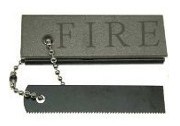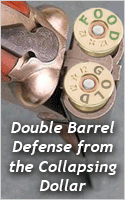 When it comes to survival, oxygen is essential. Without oxygen, it really doesn’t matter how much food and water we’ve got in our emergency food storage. But when it comes to preserving the shelf life of long-term food storage, oxygen is your worst enemy---in fact it’s considered a contaminant. An airtight, oxygen-free environment is essential for preventing oxidation, insect infestation, and the infiltration of bacteria, mold and other microorganisms that can destroy food storage over time. Here’s a look at 4 ways to prolong shelf life by removing oxygen from your short and long-term food storage.
When it comes to survival, oxygen is essential. Without oxygen, it really doesn’t matter how much food and water we’ve got in our emergency food storage. But when it comes to preserving the shelf life of long-term food storage, oxygen is your worst enemy---in fact it’s considered a contaminant. An airtight, oxygen-free environment is essential for preventing oxidation, insect infestation, and the infiltration of bacteria, mold and other microorganisms that can destroy food storage over time. Here’s a look at 4 ways to prolong shelf life by removing oxygen from your short and long-term food storage.
- Use Foil Pouches: Commercially available pouches made from multiple layers of food-grade plastic and aluminum are effective at combatting the effects of oxygen, as they allow the transfer of minuscule amounts of oxygen over time. The only downside is that these pouches are not rodent proof, so you’ll need to store them in pest proof containers. To ensure freshness, only foods that are low in oils and have moisture contents of 10% or less should be stored in foil pouches.
- Use Dry Ice: When storing grains and legumes in plastic buckets, you can reduce the oxygen content by using dry ice. Dry ice is frozen carbon di (Read More....)







